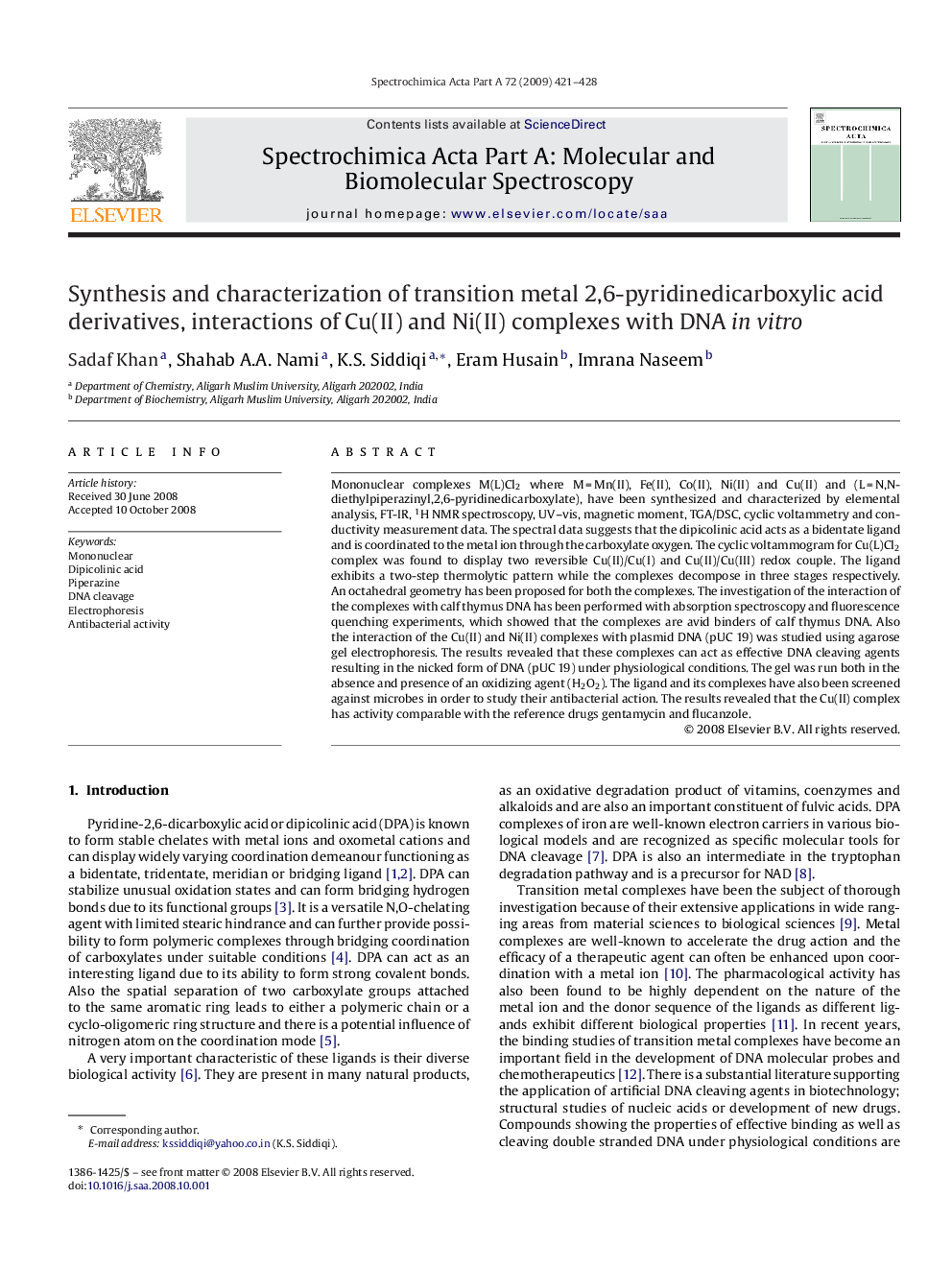| Article ID | Journal | Published Year | Pages | File Type |
|---|---|---|---|---|
| 1233652 | Spectrochimica Acta Part A: Molecular and Biomolecular Spectroscopy | 2009 | 8 Pages |
Mononuclear complexes M(L)Cl2 where M = Mn(II), Fe(II), Co(II), Ni(II) and Cu(II) and (L = N,N-diethylpiperazinyl,2,6-pyridinedicarboxylate), have been synthesized and characterized by elemental analysis, FT-IR, 1H NMR spectroscopy, UV–vis, magnetic moment, TGA/DSC, cyclic voltammetry and conductivity measurement data. The spectral data suggests that the dipicolinic acid acts as a bidentate ligand and is coordinated to the metal ion through the carboxylate oxygen. The cyclic voltammogram for Cu(L)Cl2 complex was found to display two reversible Cu(II)/Cu(I) and Cu(II)/Cu(III) redox couple. The ligand exhibits a two-step thermolytic pattern while the complexes decompose in three stages respectively. An octahedral geometry has been proposed for both the complexes. The investigation of the interaction of the complexes with calf thymus DNA has been performed with absorption spectroscopy and fluorescence quenching experiments, which showed that the complexes are avid binders of calf thymus DNA. Also the interaction of the Cu(II) and Ni(II) complexes with plasmid DNA (pUC 19) was studied using agarose gel electrophoresis. The results revealed that these complexes can act as effective DNA cleaving agents resulting in the nicked form of DNA (pUC 19) under physiological conditions. The gel was run both in the absence and presence of an oxidizing agent (H2O2). The ligand and its complexes have also been screened against microbes in order to study their antibacterial action. The results revealed that the Cu(II) complex has activity comparable with the reference drugs gentamycin and flucanzole.
